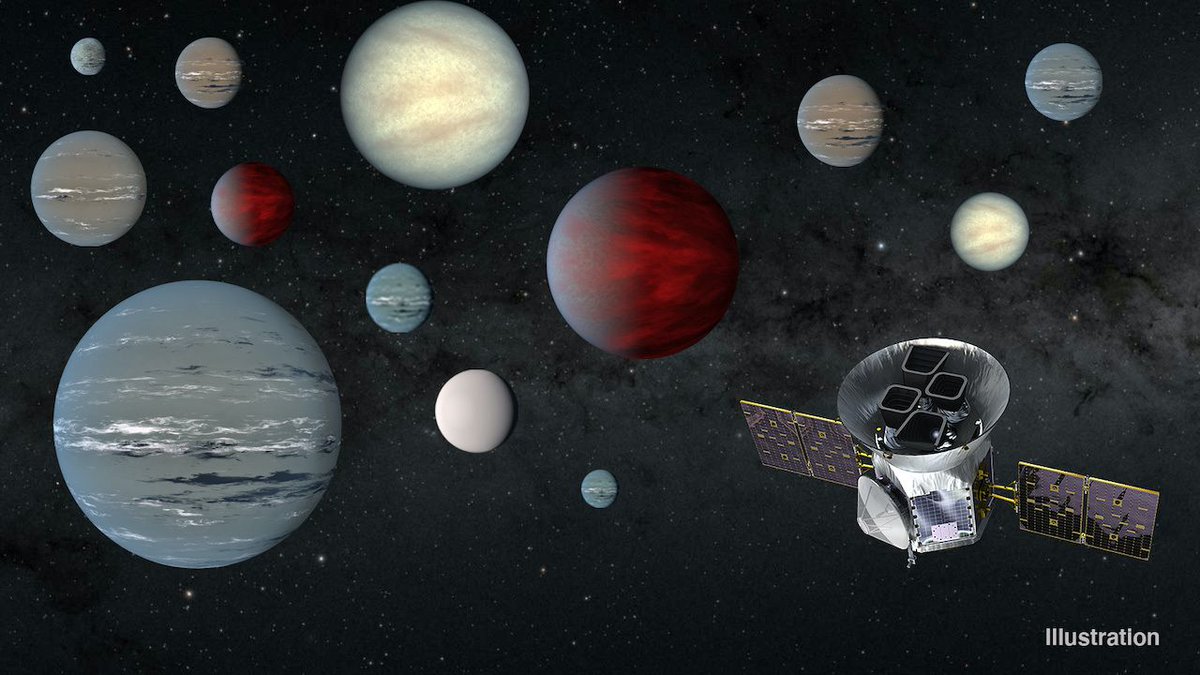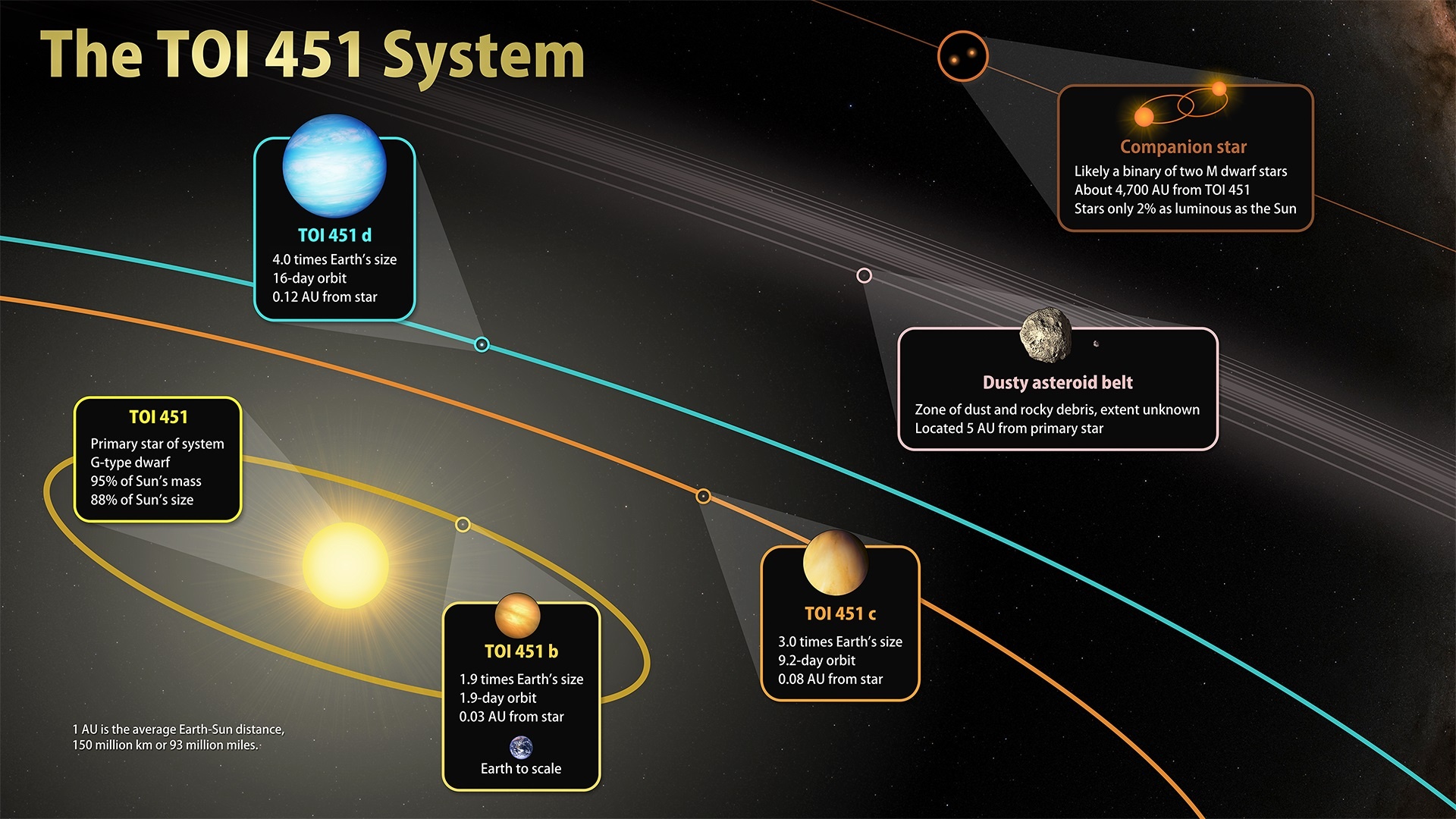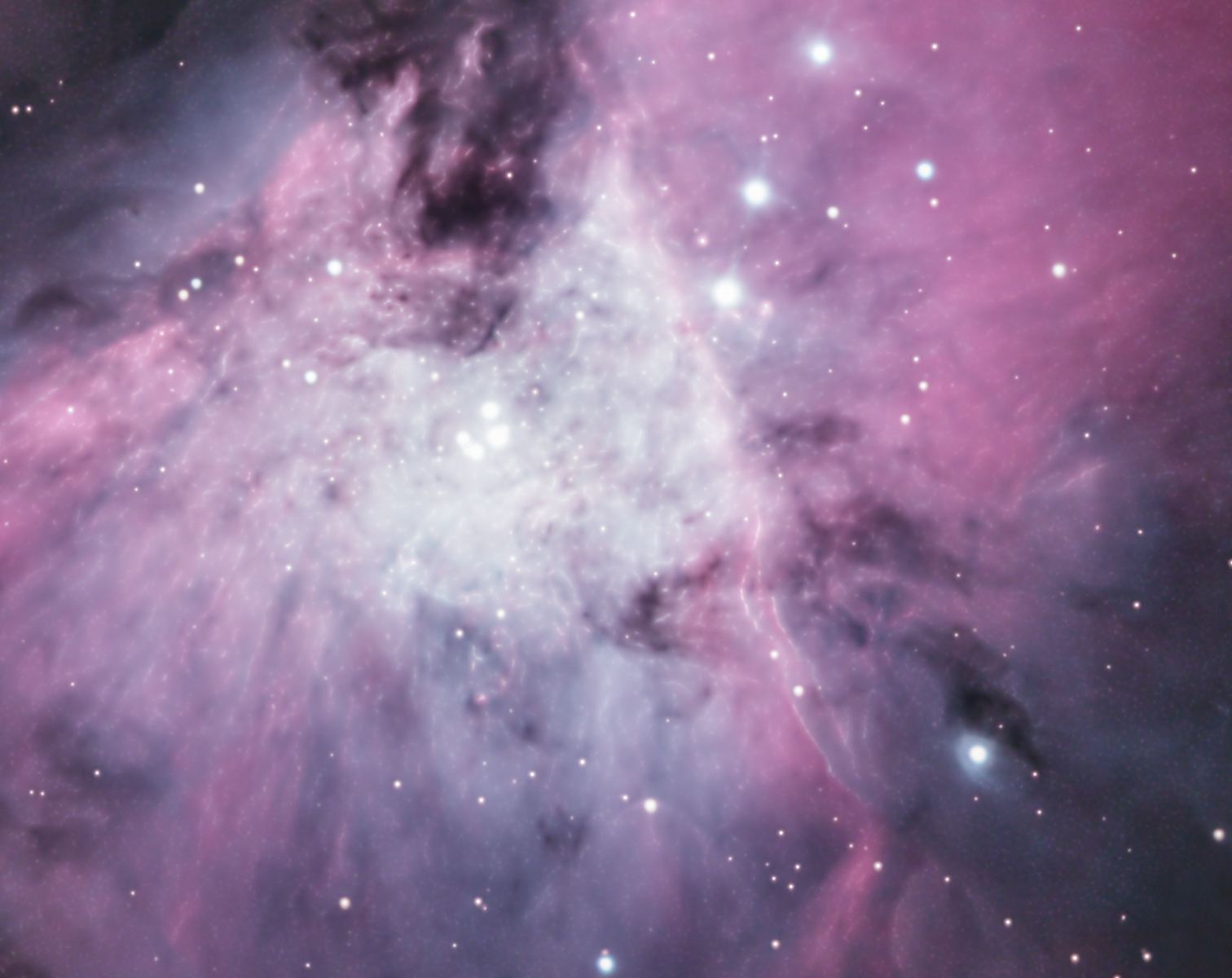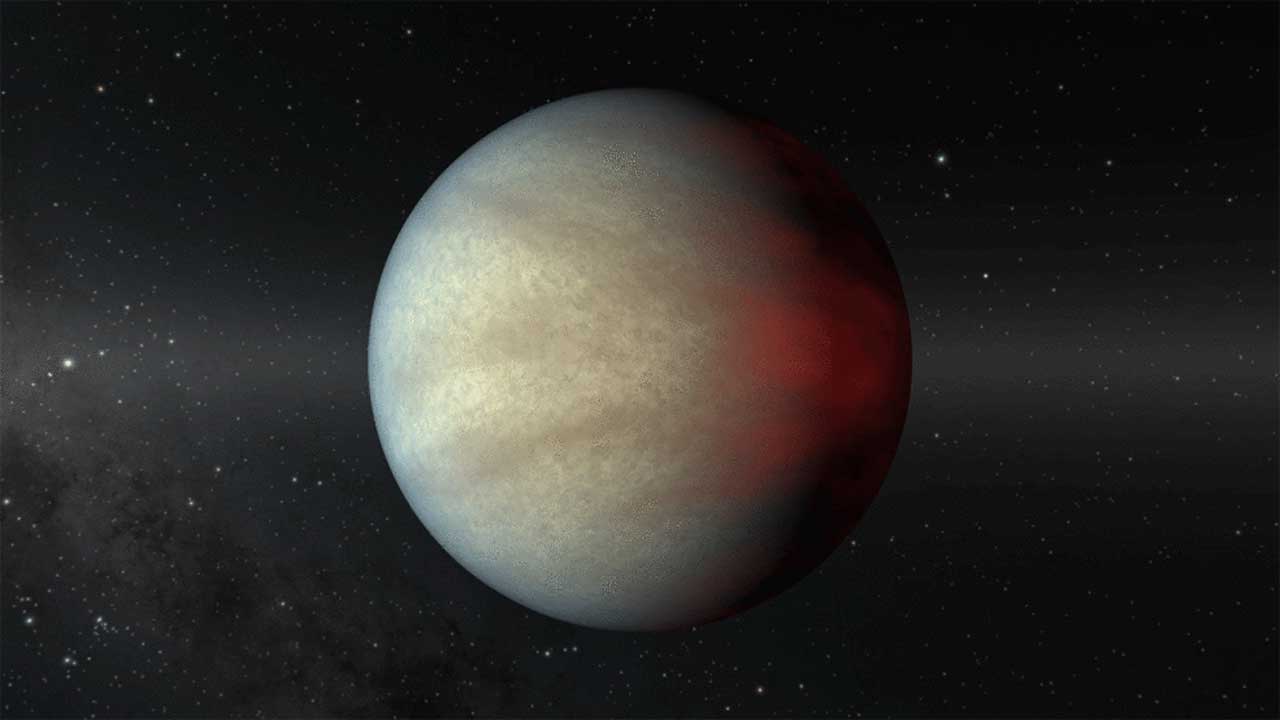Exoplanetology has been on a tear recently. This is largely due to an abundance of data collected by a new generation of satellites, one of which is the Transiting Exoplanet Survey Satellite (TESS). Now the project has reached a new milestone with another release of data – 2,200 planet candidates collected, far surpassing the 1,600 expected candidates in the mission’s first two years. Now comes a potentially even more daunting task – following up with each of them.
Continue reading “TESS has Found 2,200 Potential Exoplanets so far”Just Some of the Planets That TESS Has Found Nearby
Ever since NASA’s Kepler Space Telescope was launched in 2009, there has an explosion in the study of the extrasolar planets. With the retirement of Kepler in 2018, it has fallen to missions like the Transiting Exoplanet Survey Satellite (TESS) to pick up where its predecessor left off. Using observations from TESS, an international team of astronomers recently discovered three exoplanets orbiting a young Sun-like star named TOI 451.
Continue reading “Just Some of the Planets That TESS Has Found Nearby”A Sunlike Star Found With Four (No, Five!) Exoplanets Orbiting It

In just nine months (October 31st, 2021), NASA’s long-awaited James Webb Space Telescope (JWST) will finally be launched to space. Once operational, this next-generation observatory will use its powerful infrared imaging capabilities to study all kinds of cosmological phenomena. It will also be essential to the characterization of extrasolar planets and their atmospheres to see if any are habitable.
In anticipation of this, astronomers have been designating exoplanets as viable candidates for follow-up studies. Using data from the Transiting Exoplanet Survey Satellite (TESS), an international team led by MIT researchers discovered four new exoplanets orbiting a Sun-like star about 200 light-years from Earth. This system could be an ideal place for James Webb to spot a habitable planet.
Continue reading “A Sunlike Star Found With Four (No, Five!) Exoplanets Orbiting It”Time Flies. NASA Releases a Mosaic of TESS’ View of the Northern Sky After Two Years of Operation

NASA’s TESS planet-finding spacecraft completed its primary mission about 3 months ago. TESS’s (Transiting Exoplanet Survey Satellite) job was to search the brightest stars nearest to Earth for transiting exoplanets. It found 74 confirmed exoplanets, with another ~1200 candidates awaiting confirmation.
It surveyed 75% of the sky during its two-year primary mission, and now NASA has released a composite image of the northern sky, made up of more than 200 individual images.
Continue reading “Time Flies. NASA Releases a Mosaic of TESS’ View of the Northern Sky After Two Years of Operation”Machine Learning Algorithm Scoops up 50 New Exoplanets
Advances in technology are having a profound impact on astronomy and astrophysics. At one end, we have advanced hardware like adaptive optics, coronographs, and spectrometers that allow for more light to be gathered from the cosmos. At the other end, we have improved software and machine learning algorithms that are allowing for the data to be analyzed and mined for valuable nuggets of information.
One area of research where this is proving to be invaluable is in the hunt for exoplanets and the search for life. At the University of Warwick, technicians recently developed an algorithm that was able to confirm the existence of 50 new exoplanets. When used to sort through archival data, this algorithm was able to sort through a sample of candidates and determine which were actual planets and which were false positives.
Continue reading “Machine Learning Algorithm Scoops up 50 New Exoplanets”Astronomers Thought They’d Found a Red Dwarf That Wasn’t Hostile to its Habitable Zone Planets. They Were Wrong
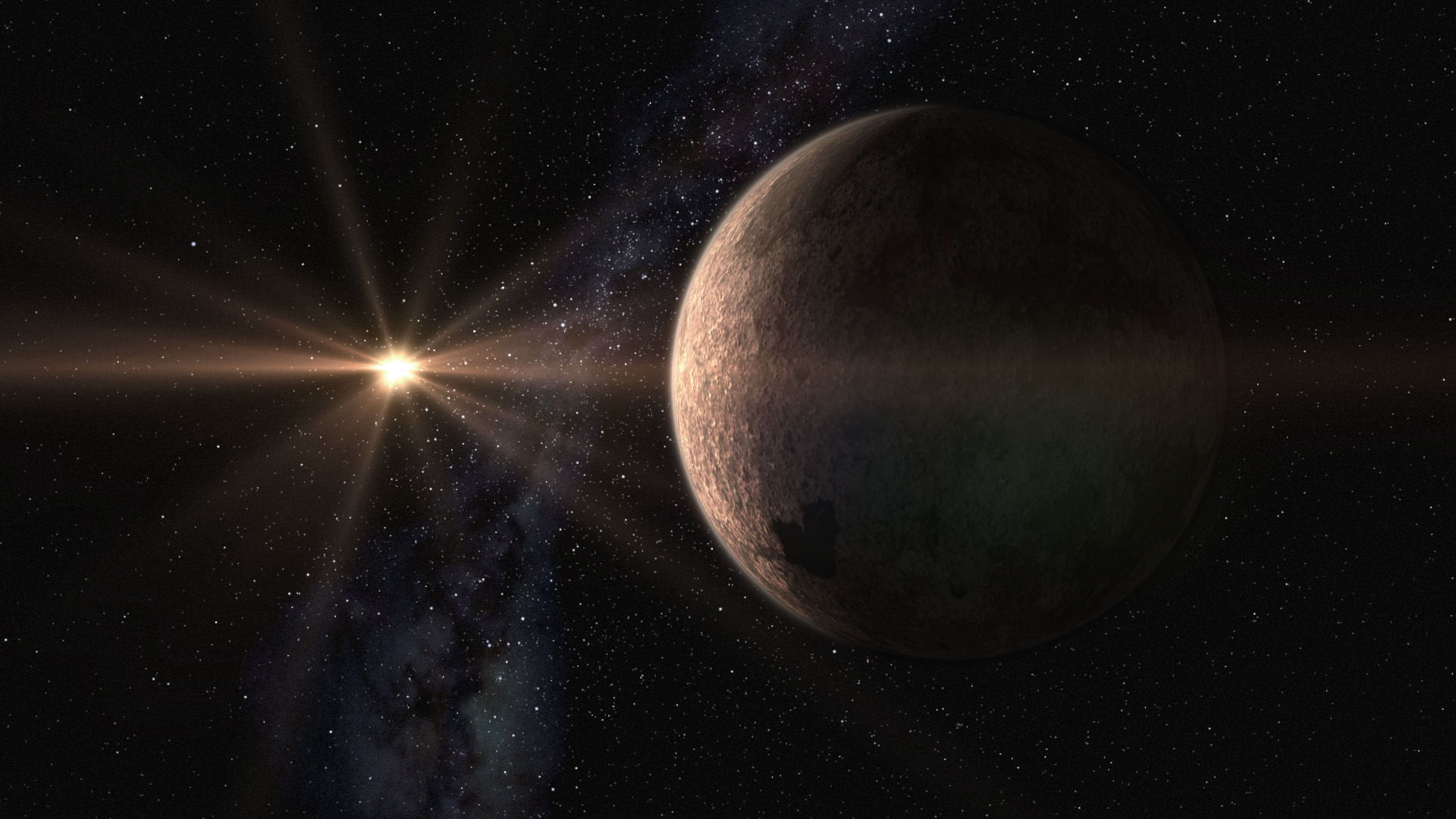
In the past decade, the study of exoplanets has grown by leaps and bounds. At present, a total of 4,201 planets have been confirmed beyond the Solar System and another 5,481 candidates await confirmation. In the midst of all this, M-type red dwarf stars have become a focus of exoplanet research because they appear to be the most likely place where rocky (aka. Earth-like) planets can be found orbiting within the star’s habitable zone (HZ).
However, that does not mean that red dwarf stars are good candidates for hosting habitable planets. Take GJ 887, for example, one of the brightest M stars in the sky that has a system of two (possibly three) planets. In the past, this star was believed to be calm and stable, but new research by astronomers from Arizona State University has shown that GJ 887 might not be so calm as previously thought.
Continue reading “Astronomers Thought They’d Found a Red Dwarf That Wasn’t Hostile to its Habitable Zone Planets. They Were Wrong”There’s No Chemical Difference Between Stars With or Without Planets
Strange New Worlds
Imagine if a star could tell you it had planets. That would be really helpful because finding planets orbiting distant stars – exoplanets – is hard. We found Neptune, the most distant planet in our own solar system, in 1846. But we didn’t have direct evidence of a planet around ANOTHER star until….1995.…149 years later. Think about that. Any science fiction you watched or read that was written before 1995 which depicted travel to exoplanets assumed that other planets even existed. Star Trek: The Next Generation aired its last season in 1994. We didn’t even know if Vulcan was out there. (Now we do!…sortof)

Astronomers are Starting to Find Planets in Much Longer Orbits. Cooler, More Habitable Planets

We’re getting better and better at detecting exoplanets. Using the transit method of detection, the Kepler Space Telescope examined over 530,000 stars and discovered over 2,600 explanets in nine years. TESS, the successor to Kepler, is still active, and has so far identified over 1800 candidate exoplanets, with 46 confirmed.
But what if, hidden in all that data, there were even more planets? Astronomers at Warwick University said they’ve found one of these “lost” planets, and that they think they’ll find even more.
Continue reading “Astronomers are Starting to Find Planets in Much Longer Orbits. Cooler, More Habitable Planets”Do Hot Jupiters Form Close in, or Do They Migrate? A Newly-Discovered Planet Might Help Answer This
The discovery of over 4000 planets (4,171 confirmed and counting!) beyond our Solar System has revolutionized the field of astronomy. Unfortunately, one of the downsides of all these discoveries is how it has shaken up theories about how our Solar System formed. In the past, astronomers thought that the eight planets (or nine, or over one hundred, depending on your point of view) formed where they are currently located.
However, the discovery of gas giants that orbit close to their stars (aka. “Hot Jupiters”) has confounded this thinking. But according to a recent NASA-supported study, the recent discovery of a young gas giant could offer clues as to how Jupiter-like planets form and whether or not they migrate. This discovery was made possible thanks to the Spitzer Space Telescope, which continues to reveal things about our Universe even in retirement.
Continue reading “Do Hot Jupiters Form Close in, or Do They Migrate? A Newly-Discovered Planet Might Help Answer This”Astronomers Estimate There Are 6 Billion Earth-Like Planets in the Milky Way

Six billion Earth-like planets in the Milky Way? If true, that’s astounding. But the number needs some context.
The Milky Way has up 400 billion stars. So even if there are six billion Earth-like planets, they’re still spread far and wide throughout our vast galaxy.
Continue reading “Astronomers Estimate There Are 6 Billion Earth-Like Planets in the Milky Way”
